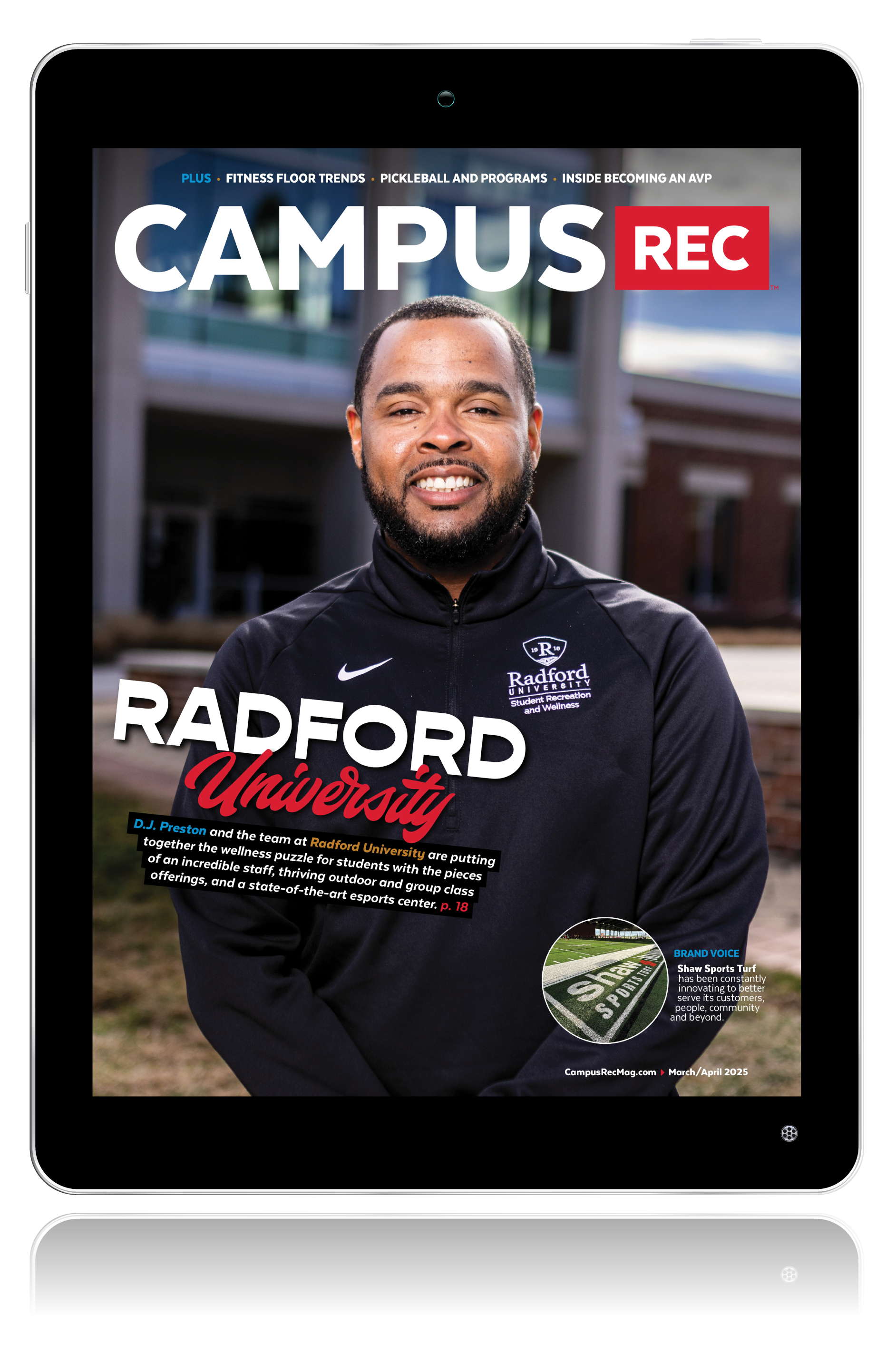Schools across the country are getting creative with revenue streams.
“We are largely student-fee funded. We only generate revenue outside of membership for extra services,” said Greg Corack, the associate director of Leadership and Programs at East Carolina University (ECU).
As budgets tighten and student enrollment dips, it’s time to think outside the box. Here, three universities share the unique revenue streams they have going on.
A Hole-in-One Revenue Stream
In the fall of 2018, ECU Campus Recreation and Wellness started a Club Sports Scholarship Golf Scramble. The scholarship is awarded annually to ECU Club Sports athletes.
“Our first year was a moderate success with $1,000 in profits donated to our scholarship fund,” said Corack. “The following year we grew to almost $2,700 in profits.”
Even in 2020, ECU hosted a COVID-safe scramble and generated $2,300. The event started with nine teams in 2018 and hit its record with 17 in 2020.
Corack said they found success with this creative revenue stream through recently graduated alumni for teams and sponsorships. Their core group of 10 teams have Campus Recreation or Club Sports alumni captains. Plus, local alumni like the manager of Play It Again Sports in the area sponsor teams and provide prizes for the scramble’s raffle.
“Utilize your contacts in the area and within driving distance to get your scramble off the ground,” said Corack.
Welcoming in the Community
At Colorado State University Pueblo (CSU-Pueblo), ThunderWolf Recreation is looking to appeal to the greater Pueblo community.
One way the department is doing this is by offering reduced rate membership prices to various groups:
- Third-party vendors like their food services vendor.
- The Early Childhood Education Management Systems at CSU-Pueblo childcare center.
- Adjacent K-12 schools’ faculty and staff.
- The Pueblo County Sheriffs Department.
“Typically, all non-campus members would pay a premium price for access. But with these partnerships, we extend our faculty/staff rate,” said Emily McElwain, the director of ThunderWolf Recreation. “We created these partnerships to expand our overall appeal to the greater Pueblo community to help our institutional vision to be the People’s University of the Southwest United States by 2028.”
By offering a reduced rate, McElwain said they have enhanced relationships between the campus and local community entities. Plus, the additional revenue aids in filling the 20% gap between the student fee revenue and ThunderWolf Recreation’s annual operating expenses. It keeps student fees from raising every year.
“These partnerships benefit us financially through increased auxiliary funds while providing access to recreational facilities and services that do not exist in the immediate area around the institution,” said McElwain.
For other recreation departments looking to open up their facility as one of their revenue streams, McElwain said to keep your primary user/fee paying group — the students — top of mind. “Partnerships should never undercut what students pay as at many institutions student rec fees are mandatory,” she said. “We must be good stewards of student fees and that includes ensuring they are paying the lowest fee for use.”
Get Your Passport Here
Did you know your recreation center could operate as a U.S. Passport Acceptance Facility?
The University of California, Santa Barbara (UC Santa Barbara) operates as such through the Los Angeles Passport Agency. Jarrell Garcia, the assistant director for operations of Recreation at UC Santa Barbara, said approval depends on the physical facilities, staffing structure, annual facility recertification, resources, etc.
For example, the UC Santa Barbara facility operates out of the Customer Service Center (CSC), which has a separate entrance. “As a passport acceptance facility, you are required to operate as a public entity,” said Garcia.
The passport operations employs one part-time staff member who falls under the Member Service coordinator. People book appointments through the reservation system Veribook. Plus, all staff in the CSC have the training to answer general questions regarding passport services.
As for revenue, Garcia noted they see approximately $27,500 to $35,000 a year. He did mention while some charges go straight to the department of state, the facility chooses the cost of items like like administrative costs, photo costs, etc.
Garcia did note if you are looking to offer passport services as one of your revenue streams, make sure to have a designated line/space just for passports to avoid interference with general rec center operations.
Plus, having worked in two rec departments with passport services — UC Santa Barbara and the University of California, Berkeley — Garcia said campuses in large and small communities can find benefit in this offering.
“Running a passport program is a great service to provide to the campus community and the community as a whole,” said Garcia. “The fact we get to provide this service to our students, especially those who plan on studying abroad, truly allows us to tap into other aspects of environmental wellness with our community.”
Image courtesy of Shutterstock











